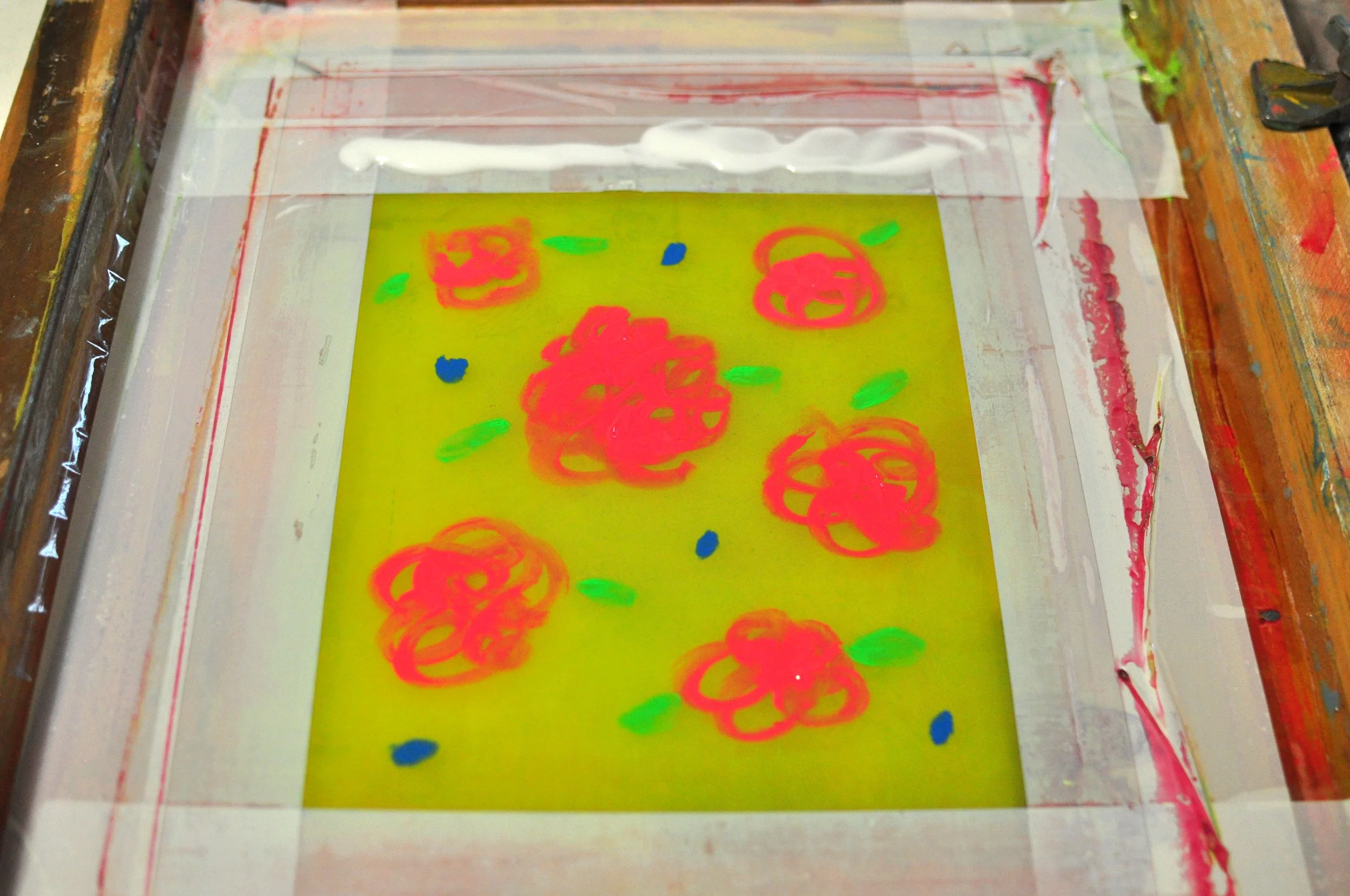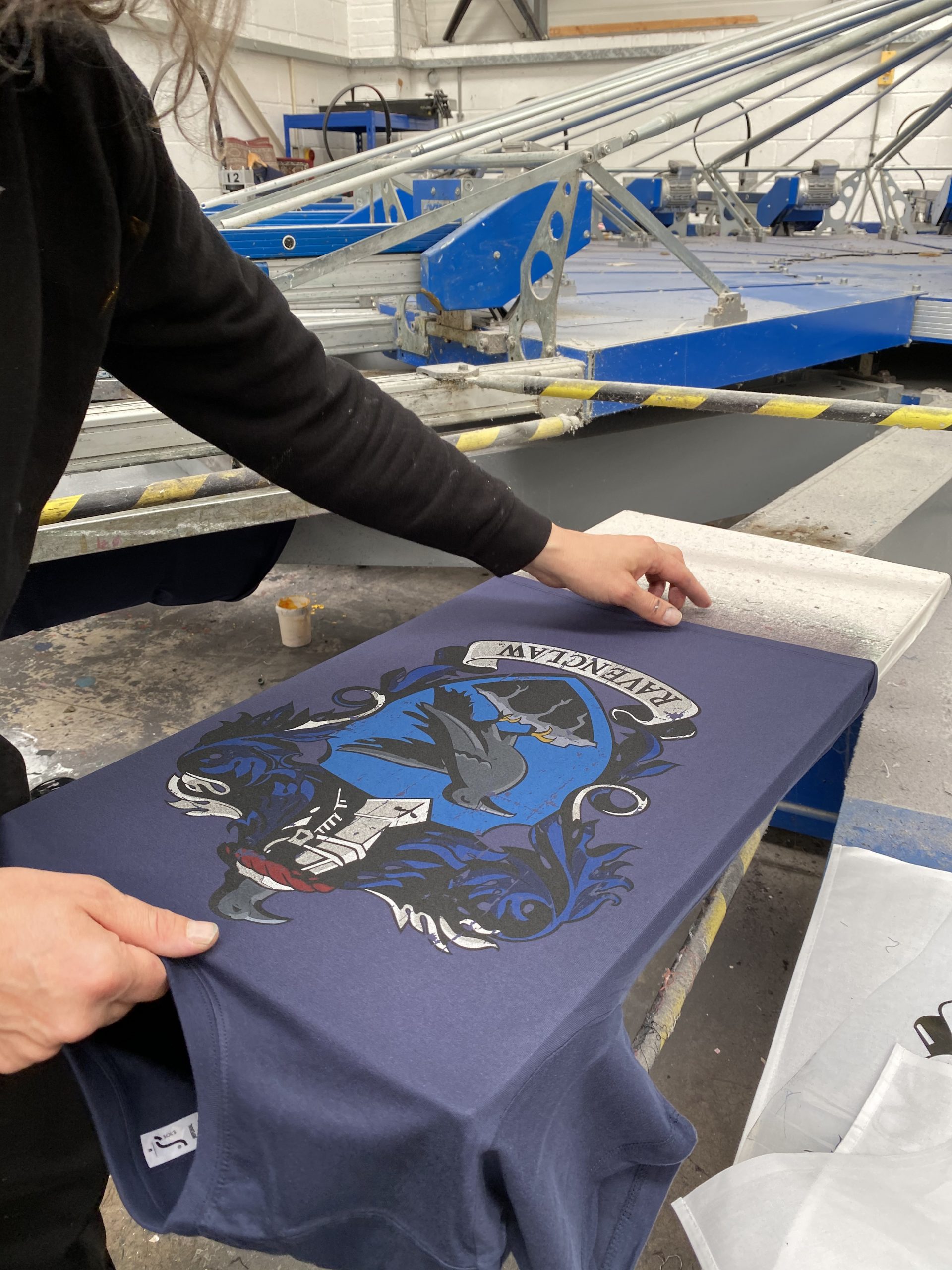Discover the Different Sorts Of Screen Printing Techniques for Your Next Task
Screen printing provides a diverse variety of techniques that can enhance any innovative task. From conventional approaches like serigraphy to modern-day advancements such as direct-to-garment printing, each technique has its distinct advantages. Specialty alternatives, consisting of green and metallic inks, present a lot more possibilities. Comprehending these techniques can significantly impact the final end result. The obstacle lies in selecting the most suitable method for particular needs and preferred impacts. What aspects should one consider?

The Basics of Screen Printing
Screen printing may seem complex, it is basically a simple procedure that involves moving ink via a mesh screen onto various surfaces. The technique starts with the production of a stencil, which specifies the style to be printed. This stencil is connected to a mesh screen, usually made from polyester or nylon. Once the stencil is in location, ink is put on the screen and pressed with the mesh making use of a squeegee, causing the desired pattern being printed on the underlying product.
Screen printing can be done on a large range of substratums, including textile, paper, and plastic, making it a functional choice for numerous jobs. The process permits for complex layouts and vivid colors, making it popular in markets such as fashion, art, and advertising. Recognizing these essentials equips individuals with the fundamental expertise needed to discover more advanced techniques in screen printing.
Standard Screen Printing Techniques
Standard screen printing methods have been employed for centuries, preserving the workmanship and creativity of this method. This approach utilizes a mesh screen to transfer ink onto a substrate, such as fabric or paper, enabling lively and long-lasting layouts. The process begins with developing a pattern, which blocks particular locations of the screen to control where the ink will be applied.
One prominent strategy is serigraphy, typically made use of for imaginative prints and minimal versions. Another is using water-based inks, which are green and supply a soft feeling on fabrics - 10:9 Design Screen Printing Texas. Additionally, typical approaches can consist of hand-operated printing, where craftsmens apply ink with a squeegee, ensuring precision and interest to information
These strategies continue to be valued in the market for their responsive quality and the one-of-a-kind textures they generate, appealing to both creators and consumers that value the heritage of screen printing.
Digital Screen Printing Innovations
As the demand for faster manufacturing and personalization in the printing sector has risen, digital screen printing advancements have become a game-changer. This modern technology blends standard screen printing techniques with electronic procedures, enabling rapid prototyping and detailed designs that were formerly difficult to achieve. One substantial advancement is the introduction of direct-to-garment (DTG) printing, which facilitates high-grade, full-color prints on different textiles without the requirement for displays. In addition, advancements in ink formulas have actually resulted in environment-friendly choices that preserve vibrant shades while decreasing environmental influence. Making use of automated systems even more simplifies production, reducing labor expenses and enhancing precision. These innovations not just satisfy tiny batch orders and individualized styles yet likewise permit quicker turnaround times, making them perfect for companies focused on meeting consumer demands in a fast-paced market. Digital screen printing, consequently, represents a vital advancement in the domain name of printing techniques.
Specialty Screen Printing Approaches
Discovering specialized screen printing approaches exposes a varied selection of methods that push the boundaries of creativity and capability in the printing market. Amongst these, glow-in-the-dark inks give a special visual result, making layouts come alive in low-light problems. Metallic inks, understood for their glittering finish, include a touch of luxury to published products. Another cutting-edge technique is discharge printing, which eliminates color from the textile rather than adding ink, leading to a soft, vintage feeling. High-density printing creates an increased appearance externally, enhancing tactile engagement. Additionally, water-based inks are gaining appeal for their dynamic colors and lowered ecological influence. Each of these specialty methods deals with specific style requirements, making it possible for brands and musicians to develop standout products that resonate with their audiences. By leveraging these approaches, businesses can raise their screen printing tasks to new elevations, guaranteeing unforgettable perceptions.
Eco-Friendly Screen Printing Options
Environment-friendly screen printing alternatives are getting grip as the market moves towards sustainability. Lasting ink options and the use of eco-friendly products are essential components in reducing the environmental impact of the printing process. By adopting these techniques, screen printers can add to a more lasting future while maintaining high-grade outcomes.
Lasting Ink Options

Biodegradable Products Use
As the screen printing industry progresses, the incorporation of naturally degradable materials is ending up being progressively crucial for environmentally conscious practices. Developers and manufacturers are now exploring inks and substrates made from all-natural, renewable energies that decay more successfully than traditional counterparts. These naturally degradable choices reduce plastic waste and minimize environmental effect, straightening with the expanding demand for lasting products.
Common instances consist of water-based inks and natural cotton textiles, both of which lessen harmful chemicals and promote eco-friendliness. Brands that embrace these products frequently improve their market allure, attracting customers who prioritize sustainability. As awareness of environmental concerns remains to climb, the shift in the direction of biodegradable materials in screen printing is most likely to acquire momentum, promoting a greener industry criterion.
Selecting the Right Technique for Your Project
Exactly how can one establish the most appropriate screen printing method for a certain task? The decision rests on a number of variables, including the material to be printed on, the intricacy of the design, and the wanted manufacturing volume - 10:9 Design Abilene. For example, direct-to-garment printing is ideal for detailed styles with numerous shades, while typical screen printing excels for bigger runs of easier graphics
In addition, consideration of the end-use of the published item is vital. For outdoor applications, techniques that use resilience and weather resistance, such as plastisol ink, might be favored. Alternatively, environmentally-conscious jobs may gain from water-based inks or naturally degradable products.
Inevitably, comprehending the project's distinct needs enables for an educated choice, making sure both visual appeal and functional long life. By assessing style intricacy, material compatibility, and manufacturing scale, one can efficiently choose one of the most suitable screen printing strategy to satisfy their task's goals.
Regularly Asked Concerns
What Is the History of Screen Printing?
Screen printing came from old China around 1000 ADVERTISEMENT, advancing via Japan and Europe. By the 20th century, it ended up being popular in business art and fashion, changing how designs were created and dispersed worldwide.

How Do I Prepare Artwork for Screen Printing?
To prepare art work for screen printing, one should ensure high resolution, utilize an ideal shade setting, develop different layers for each and every color, and convert text to details, assuring compatibility with the printing procedure and wanted end result.
What Materials Are Best for Screen Printing?
The finest products for screen printing consist of high-quality inks, sturdy displays, and ideal substrates like cotton, polyester, or blends. In addition, using appropriate solution and squeegees can boost the printing process and outcomes.
Can I Screen Publish in your home?
Yes, screen printing in the house is feasible. With the best materials, configuration, and methods, people can create top notch prints. However, careful consideration of work space and equipment is essential for successful results.

What Are Usual Blunders in Screen Printing?
Typical blunders in screen printing consist of inappropriate direct exposure times, insufficient ink uniformity, misalignment of screens, not enough cleansing of products, and disregarding to check prints. These mistakes can jeopardize the top quality and accuracy of the end product.
Screen printing may seem facility, it is fundamentally a simple procedure that entails transferring ink with a mesh screen onto various surface areas. As the demand for faster manufacturing and modification in the printing market has surged, digital screen printing innovations have arised as a game-changer. Exploring specialized screen printing approaches reveals a varied selection of strategies that press the limits of creative thinking and functionality in the printing market. The best products for screen printing include top quality inks, long lasting displays, and ideal substrates like cotton, polyester, or blends (10:9 Design Abilene). Common errors in screen printing include inappropriate direct exposure times, insufficient ink uniformity, imbalance of screens, inadequate cleansing of materials, and overlooking to examine prints